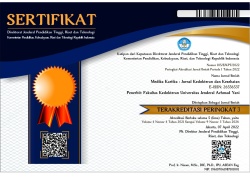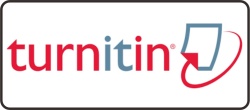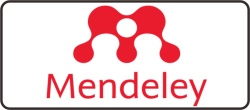PEMANFAATAN MONOTERAPI DAN TERAPI KOMBINASI VITAMIN C TOPIKAL DAN DERIVATNYA SEBAGAI AGEN PENCERAH KULIT: A SCOPING REVIEW
Abstract
Sebagai salah satu agen pencerah kulit, vitamin C maupun derivatnya digunakan dalam industri kosmetik dalam beragam konsentrasi dan bentuk topikal. Formulasi kosmetik dengan kandungan vitamin C seharusnya efektif dalam mencapai manfaat vitamin C pada kulit. Telaah ini bertujuan untuk mengetahui jenis, besar konsentrasi, dan bentuk vitamin C topikal dan derivatnya sebagai agen pencerah kulit manusia. Seleksi artikel dilakukan berdasarkan alur PRISMA-ScR (Preferred Reporting Items for Systematic Reviews and Meta-Analyses Extension for Scoping Reviews). Kata kunci yang digunakan dalam pencarian artikel pada database yaitu “(vitamin C OR ascorbic acid OR asam askorbat) AND (brightening OR lightening OR whitening OR pencerah)” pada database Google Scholar, ScienceDirect, PubMed, ProQuest, dan EBSCOHost, “vitamin C” pada database Neliti, serta “vitamin C DAN kulit” pada database GARUDA. Jenis artikel yang dipilih merupakan artikel yang terbit pada tahun 2011–2021 dengan metode RCT dan non-RCT, baik original article maupun grey literature. Didapatkan hasil vitamin C (L-ascorbic acid) dan derivatnya (palmitoyl-KVK-L-ascorbic acid, tetrahexadecyl ascorbate, dan magnesium ascorbyl phosphate) digunakan sebagai pencerah kulit pada kondisi normal, melasma, atau amyloidosis makular. Ditemukan beragam besar konsentrasi yang digunakan dari 2% hingga 30% dalam bentuk losio, krim, atau serum; serta disimpulkan bahwa penggunaan vitamin C topikal atau derivatnya dapat mencerahkan kulit wajah.
Kata kunci: pencerah kulit, topikal, vitamin C
References
2. Nokinsee D, Shank L, Lee VS, et al. Estimation of Inhibitory Effect against Tyrosinase Activity through Homology Modeling and Molecular Docking. Enzyme Res 2015; 2015: 1–12.
3. Telang P. Vitamin C in Dermatology. Indian Dermatol Online J 2013; 4: 143–146.
4. Peters MDJ, Marnie C, Tricco AC, et al. Updated methodological guidance for the conduct of scoping reviews. JBI Evid Synth; 18. Epub ahead of print 2020. DOI: 10.11124/JBIES-20-00167.
5. Peters MDJ, Godfrey CM, Mclnerney P, et al. Methodology for JBI scoping reviews. The Joanne Briggs Institute 2015; 1–14.
6. Sardesai VR, Kolte JN, Srinivas BN. A Clinical Study of Melasma and a Comparison of the Therapeutic Effect of Certain Currently Available Topical Modalities for its Treatment. Indian J Dermatol 2013; 58: 239.
7. Kim HM, An HS, Bae JS, et al. Effects of palmitoyl-KVK-L-ascorbic acid on skin wrinkles and pigmentation. Arch Dermatol Res 2017; 309: 397–402.
8. Kelm RC, Zahr AS, Kononov T, et al. Effective lightening of facial melasma during the summer with a dual regimen: A prospective, open-label, evaluator-blinded study. J Cosmet Dermatol 2020; 19: 3251–3257.
9. Aboul-Einien MH, Kandil SM, Abdou EM, et al. Ascorbic acid derivative-loaded modified aspasomes: formulation, in vitro, ex vivo and clinical evaluation for melasma treatment. J Liposome Res 2019; 30: 54–67.
10. Ravetti S, Clemente C, Brignone S, et al. Ascorbic Acid in Skin Health. Cosmetics 2019, Vol 6, Page 58 2019; 6: 58.
11. Sobhi RM, Sobhi AM. A single-blinded comparative study between the use of glycolic acid 70% peel and the use of topical nanosome vitamin C iontophoresis in the treatment of melasma. J Cosmet Dermatol 2012; 11: 65–71.
12. Monteiro RC, Kishore N, Bhat RM, et al. A comparative study of the efficacy of 4% hydroquinone vs 0.75% Kojic acid cream in the treatment of facial melasma. Indian J Dermatol 2013; 58: 157.
13. Lee MC, Chang CS, Huang YL, et al. Treatment of melasma with mixed parameters of 1,064-nm Q-switched Nd:YAG laser toning and an enhanced effect of ultrasonic application of vitamin C: a split-face study. Lasers Med Sci 2015; 30: 159–163.
14. Zhou HL, Hu B, Zhang C. Efficacy of 694-nm fractional Q-switched ruby laser (QSRL) combined with sonophoresis on levorotatory vitamin C for treatment of melasma in Chinese patients. Lasers Med Sci 2016; 31: 991–995.
15. Sobhi RM, Sharaoui I, El Nabarawy EA, et al. Comparative study of fractional CO2 laser and fractional CO2 laser-assisted drug delivery of topical steroid and topical vitamin C in macular amyloidosis. Lasers Med Sci 2018; 33: 909–916.
16. Zasada M, Markiewicz A, Drożdż Z, et al. Preliminary randomized controlled trial of antiaging effects of l-ascorbic acid applied in combination with no-needle and microneedle mesotherapy. J Cosmet Dermatol 2019; 18: 843–849.
17.Rattanawiwatpong P, Wanitphakdeedecha R, Bumrungpert A, et al. Anti-aging and brightening effects of a topical treatment containing vitamin C, vitamin E, and raspberry leaf cell culture extract: A split-face, randomized controlled trial. J Cosmet Dermatol 2020; 19: 671–676.
18. Draelos ZD, Diaz I, Cohen A, et al. A novel skin brightening topical technology. J Cosmet Dermatol 2020; 19: 3280–3285.
19.Rinandari U, Dewi PF, Kusumawardani A, et al. Terapi L-Ascorbic Acid 10% dan Glutation 2% Dibandingkan dengan Hidrokuinon 4% pada Pasien Melasm. Jurnal Health Sains 2021; 2: 1091–1108.



























